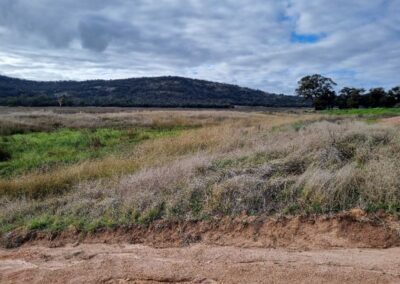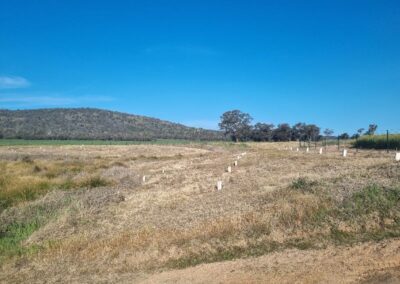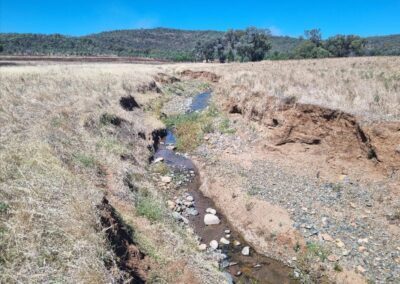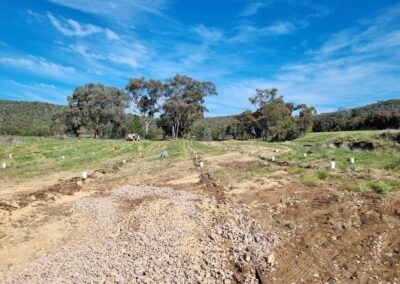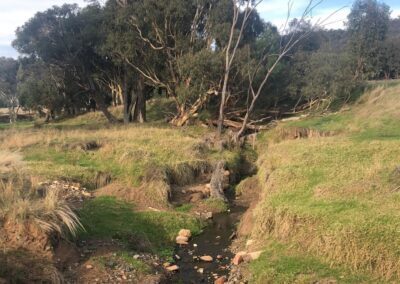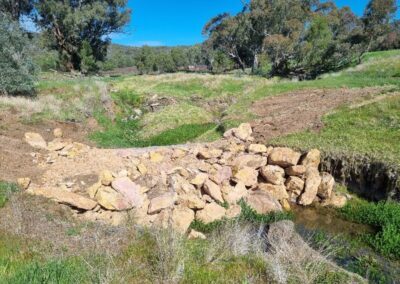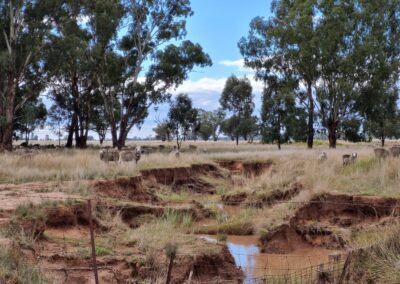Following one of the worst droughts in recent history came several years of heavier rain events, which caused significant erosion across the landscape and gouged the streambanks of Ooma Creek tributaries.
To combat this issue Weddin Landcare assisted three landholders to undertake revegetation works.
Landholders involved in Weddin Landcare’s Ooma Creek Tributaries Riparian Restoration Project have now completed the on-ground works required for this project, which will see a total of almost 30Ha of riparian land protected and restored, and 2700 trees and shrubs planted to reduce streambank erosion, improve water quality and biodiversity, protect valuable property and provide other benefits for the farmers and for wildlife.
The project involved three individual sites on tributaries of the Ooma Creek. Each site was fenced to control stock access to protect streambanks and allow native vegetation to establish and multiply, which will further stabilise the areas and improve the riparian ecosystem.
A mix of local native trees and shrubs propagated by the Weddin Community Native Nursery were then planted at each site to improve the riparian corridor and provide further stabilisation of the banks. Neighbours and community members also got involved to help complete this project, with 17 volunteers participating in a field day to learn valuable revegetation skills and plant over 1000 trees and shrubs.
One site also involved the construction of two leaky weirs to try and help mitigate extensive streambank erosion that has contributed significant sediment and nutrient loads downstream.
The project is a terrific extension of some great work done by the former Ooma Landcare group around 20 years ago. Well done to the landholders involved, we hope that your riparian corridors thrive!
Weddin Landcare would like to thank the project participants, volunteers and local contractors involved in the project along with Local Land Services NSW and Landcare NSW for their support of this project through funding as part of the Riparian Restoration Grants.

